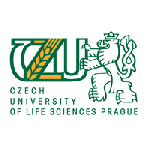CGIAR Research Program on Grain Legumes and Dryland Cereals - GLDC
Overview: FP4-1.16 - Quantitiative definition of TPE, yield gap analysis, characterization of main abiotic constraints and its effect on yield in one crop-by-region combination (choice depending on breeding team necessity/priority)
Leader:
Sunita Choudhary, International Crops Research Institute for the Semi-Arid Tropics - ICRISAT
Coleader: Jana Kholova, International Crops Research Institute for the Semi-Arid Tropics - ICRISAT
Team
members: 5
Partner
organizations: 3
Budget 2025
USD :
0
Outputs: 1
Activity/Product Description
Generally, within the breeding programs there is at least minimum understanding of the main constraints limiting the crop production in the target agro-ecosystems (biotic and abiotic stress). However, very few programs pay attention to rigorous quantification of the stress severity, frequency and its effects on production across multiple locations and seasons which is the key to explain the yield losses. Crops simulation tools enable such analysis of the crop
within the systems at relevant scale and so opens the possibility to identify the bio-geo-physical units with higher degree of similarities i.e. target population of environments; TPEs. TPEs can then become the “geographically defined breeding unit” for which the particular GxM interventions could be developed to optimize the crop production. Importantly, the crop models enable the analyses of the future environments and so provide much needed insight into the strategy which needs to be adopted in order to adapt the cropping systems to the climatic changes. Furthermore, identification of TPE allows to optimize distribution of multi-location testing sites and/or avoid redundancies. TPEs analysis also helps interpreting the outcomes of multi-location trials within the TPEs and deploy appropriate statistical treatment. In short, the TPEs insight helps to avoid testing the crops in less relevant sites and selection of crops in abnormal years which do not sufficiently represent the most frequent environmental scenarios occurring at the particular TPE.
Atlas
Outputs
| Code | Type | Output Name | Leader | Co-leader | Deliverables | Commodity | View |
|---|---|---|---|---|---|---|---|
| FP4-1.16.1 |
|
Phenotyping studies conducted | Jana Kholova | 1 | Sorghum, Pearl millet, Groundnut, Soya bean |
Personnel Involved
Partners







